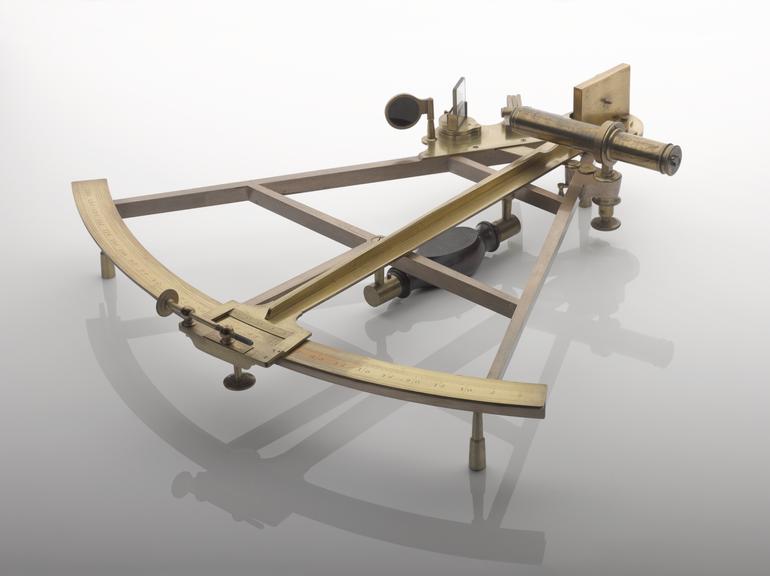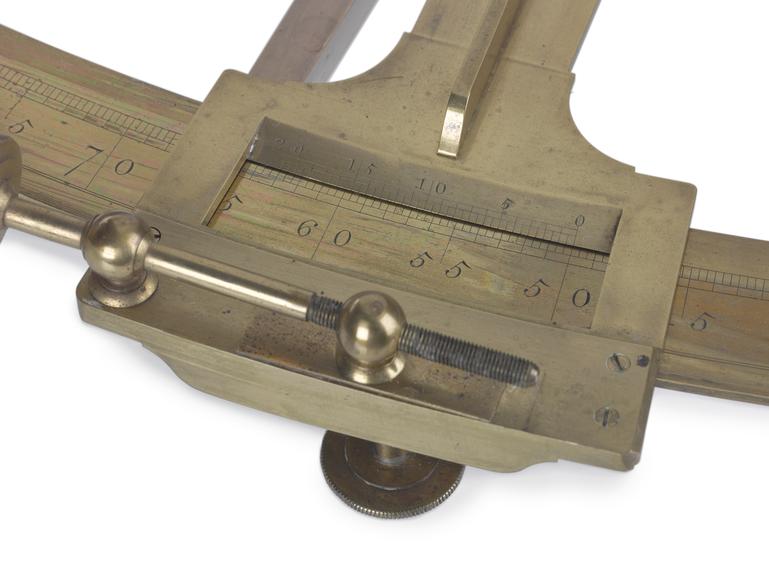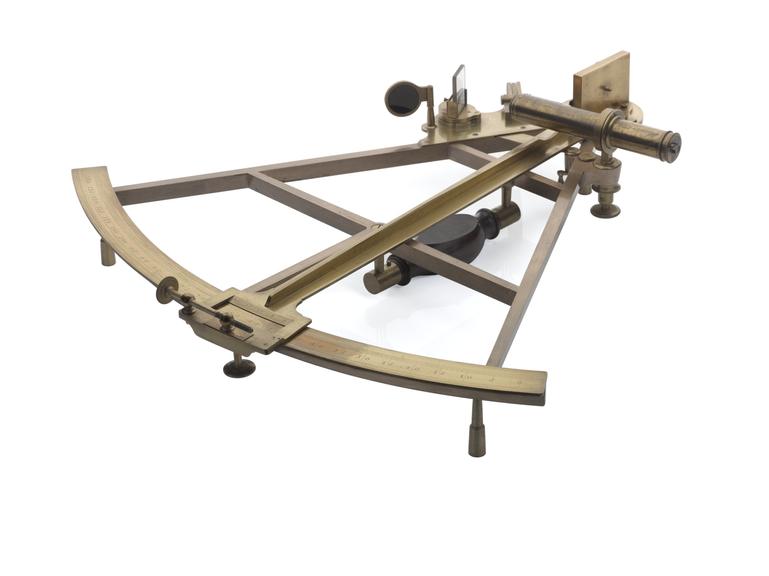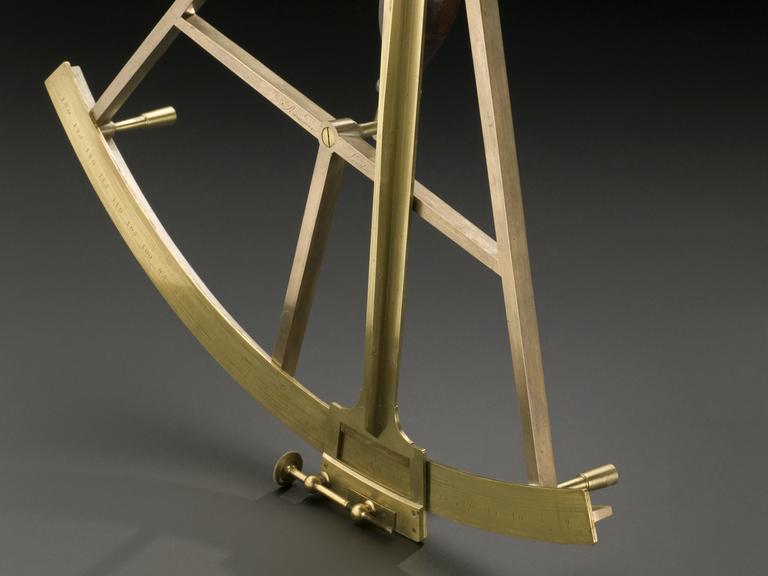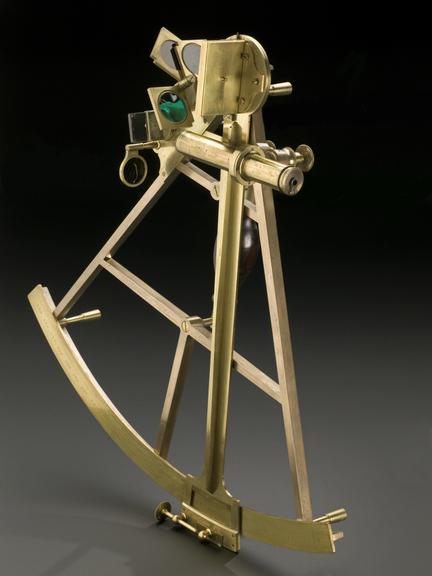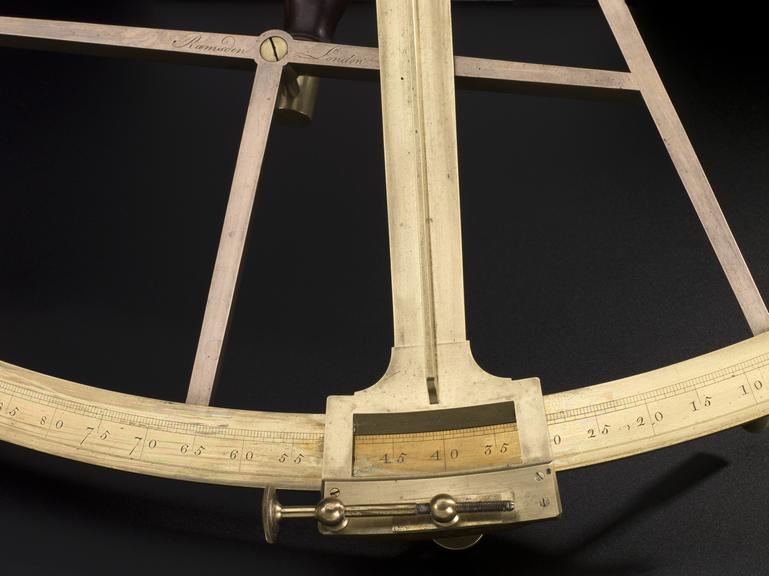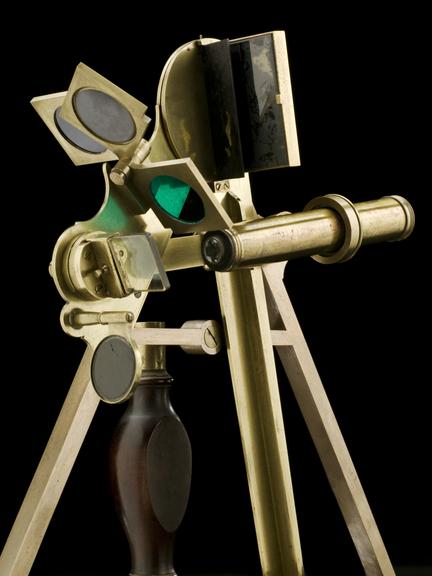
Case for Hadley type brass framed sextant
Case for a 15-inch sextant, by Ramsden, London
- Materials:
- wood
- Object Number:
- 1928-924 Pt1
- type:
- instrument case
- Image ©
- The Board of Trustees of the Science Museum










Brass sextant by Jesse Ramsden, in fitted mahogany keystone case, made 1770-75, Piccadilly, London. Sextant has polished brass 120° scale (-2° to 136°) with 20’ divisions and brass vernier (30”), three index-filter shades (red & green), one horizon filter (red) and ‘Maskelyne flap’ for greater accuracy when taking a sight of the Sun or Moon. Fitted with threaded telescope bracket for sighting telescope (130mm –inverted image).
Sextants were navigational instruments used to measure angular altitudes of celestial bodies whilst at sea, enabling mariners to determine latitude and local time. They were also used to calculate longitude at sea using the so-called ‘lunar distance’ method, carried out by comparing an accurate measurement of the angular distance between the Moon and a fixed star to a set of precalculated tables.
Sextants underwent a number of design improvements throughout the 18th century. Astronomer Royal Nevil Maskelyne made recommendations for ensuring accuracy despite unavoidable imperfections in the grinding of glass when taking sights of the Sun or Moon, which included the introduction of a hinged brass ‘Maskelyne flap’ as seen on this instrument. This sextant design by Jesse Ramsden was a similar type supplied to Captain Cook for his voyages in 1772 and 1776.

Case for a 15-inch sextant, by Ramsden, London
Brass sextant by Jesse Ramsden, Piccadilly, London, 1770-75. Sextant has polished brass 120° scale (-2° to 136°) with 20’ divisions and brass vernier (30”), three index-filter shades (red & green), one horizon filter (red) and ‘Maskelyne flap’ for greater accuracy when taking a sight of the Sun or Moon. Fitted with threaded telescope bracket for sighting telescope (130mm –inverted image). The instrument has its original fitted mahogany keystone case.
Sextants were navigational instruments used to measure angular altitudes of celestial bodies whilst at sea, enabling mariners to determine latitude and local time. They were also used to calculate longitude at sea using the so-called ‘lunar distance’ method, carried out by comparing an accurate measurement of the angular distance between the Moon and a fixed star to a set of precalculated tables.
Sextants underwent a number of design improvements throughout the 18th century. Astronomer Royal Nevil Maskelyne made recommendations for ensuring accuracy despite unavoidable imperfections in the grinding of glass when taking sights of the Sun or Moon, which included the introduction of a hinged brass ‘Maskelyne flap’ as seen on this instrument. This sextant design by Jesse Ramsden was a similar type supplied to Captain Cook for his voyages in 1772 and 1776.
One of two removeable viewing telescopes for Sextant, 15-inch, by Jesse Ramsden, London, c 1775. Type of Hadley's sextant supplied by Ramsden for Captain Cook's second and third voyages, 1772 and 1776.
